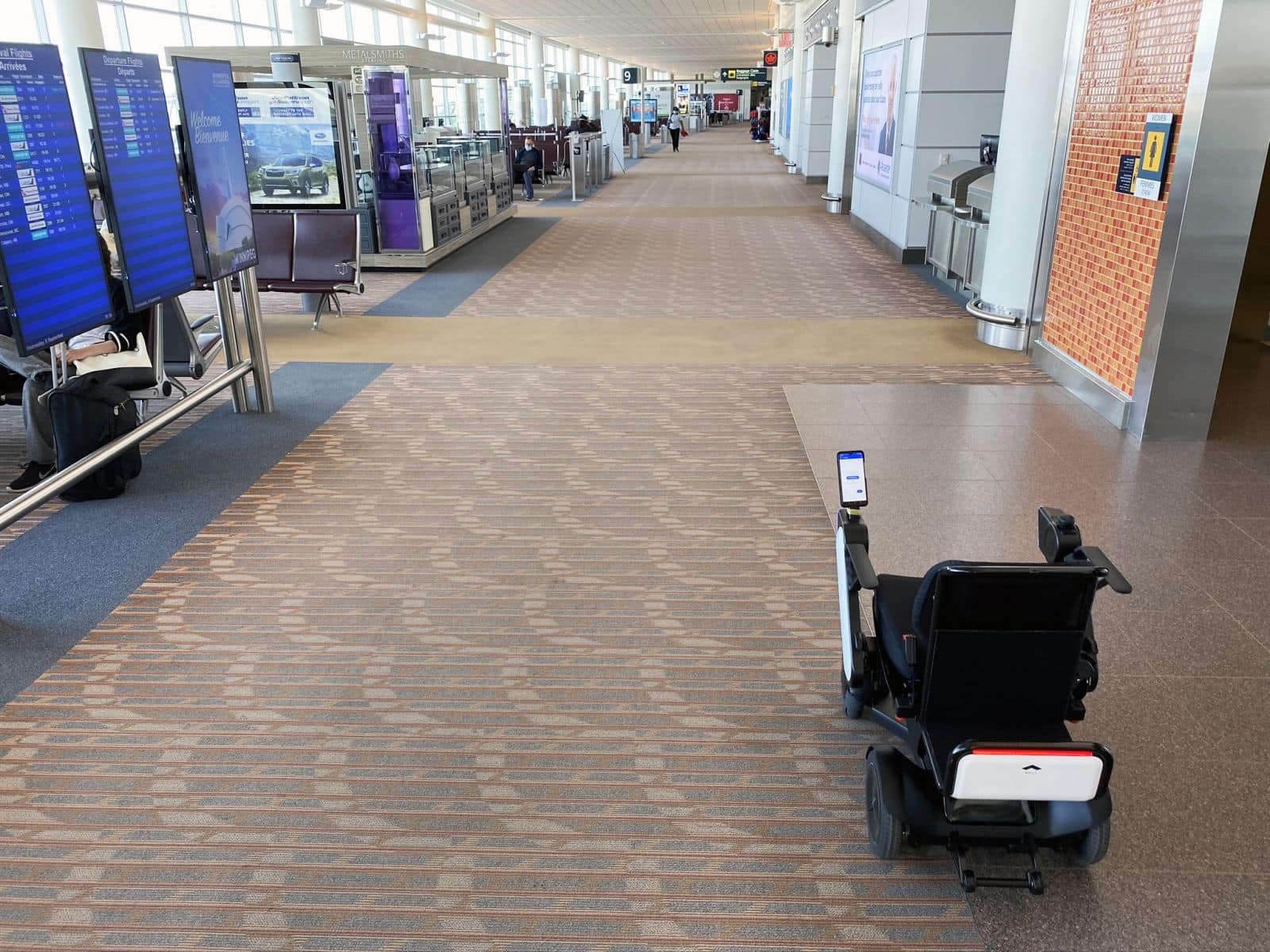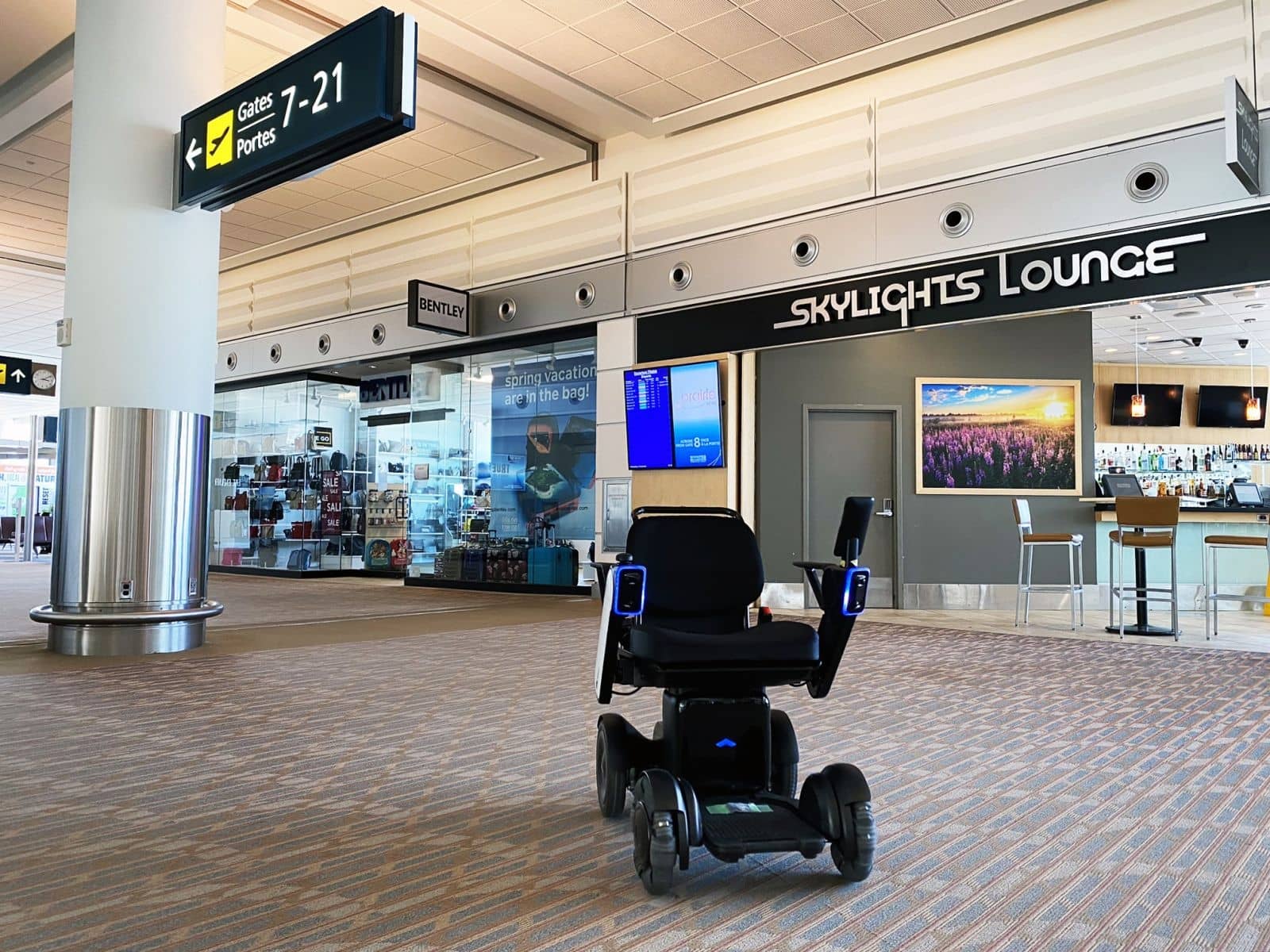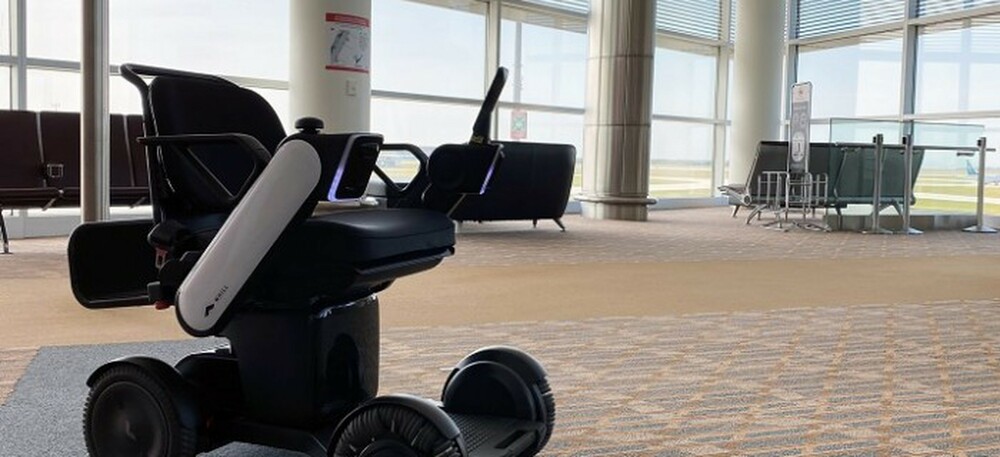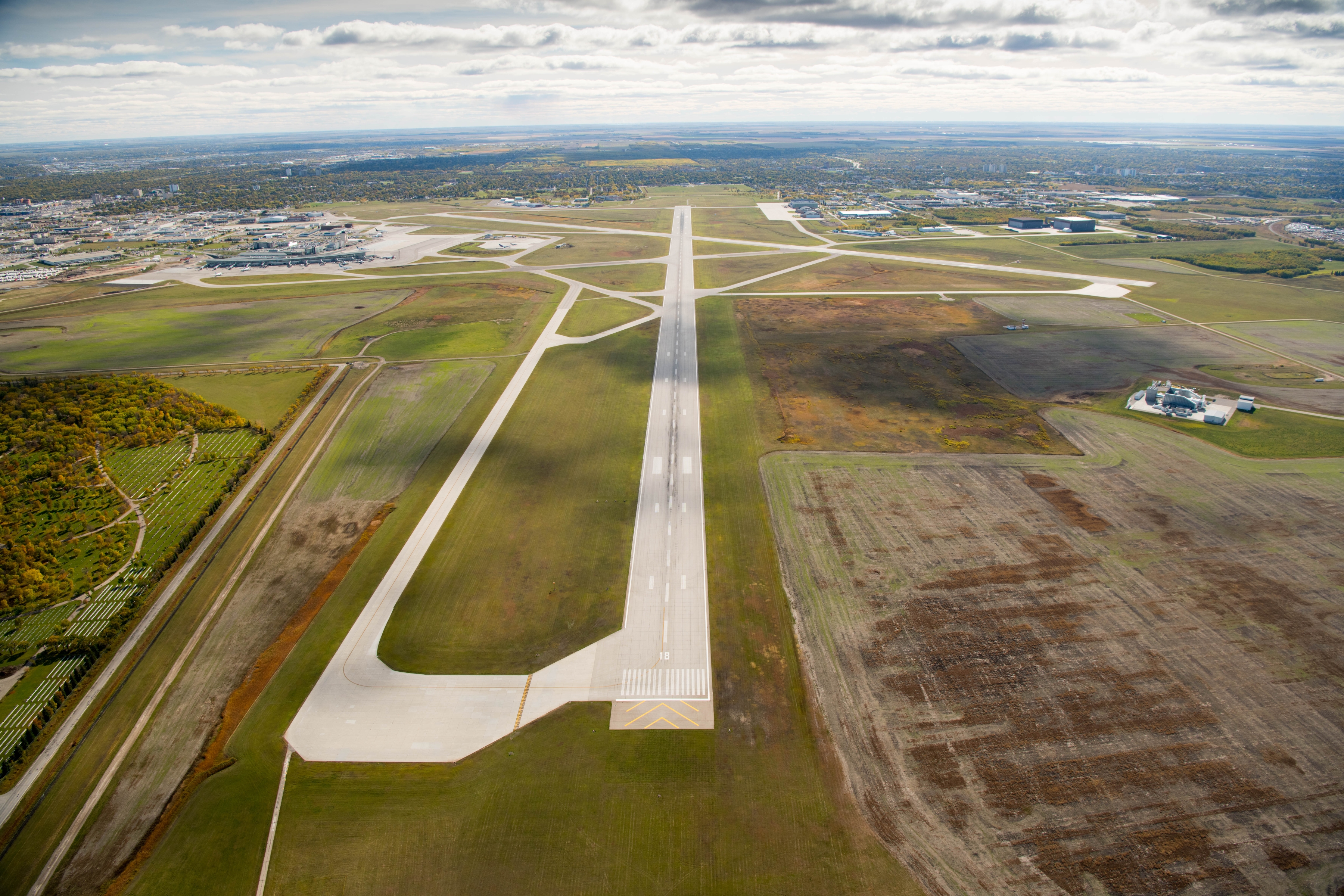To help meet the future needs of the community, Winnipeg Richardson International Airport continues to work with a group of Winnipeg-based developers on an innovative piece of assistive technology.
This week, the airport welcomed back Japanese mobility device manufacturer, WHILL, which has its North American headquarters in Winnipeg, to carry out further testing of its autonomous wheelchair. YWG is one of the first airports in North America to trial the self-driving mobility device.
"We believe this great innovation is important because it allows people to be completely independent," said Barry Rempel, President and CEO of Winnipeg Airports Authority. "We're told by 2038 that one in three people transiting through the airport will need some form of assistance. As we're able to provide services like this, we're positioned really well to further enhance accessibility."
Upon spending two full days on the airport campus, the team of three developers mapped the domestic and international departures area to prepare for the next stage of the trials. First, the self-driving device could move passengers from security to select gates.
Now, it can safely navigate this entire area of the airport at the touch of a button. A passenger with restricted mobility could use the autonomous wheelchair to go to any gate and then easily send it back to its home base or to the next user after they are done with it.
To ensure safety, the device is equipped with intelligent sensors and automatic brakes. It is also familiar with its surroundings after the latest trial. While connected to a computer, the device made many trips around this area of the airport to capture data noting where every wall, chair and sign is located. Most of the mapping is done at night when there are very few travellers so the device doesn't detect them as objects. Each time the developers return to the airport, they extend the map and fix any glitches they encounter.


"As we go, we're learning about the various sensitivities to the sensors on the device," said Justin Gagnon, Vice President of Sales and Marketing for WHILL. "For example, the change in lighting throughout the day affects shadows in the building. The device might pick it up as a person or object so we'll tweak as we go."
Since YWG launched its partnership with WHILL late last year, three rounds of trials have been performed at the airport. Through the lessons learned from each visit, developers provide feedback to other WHILL teams working around the world as they work towards a common goal. This collaboration led to the latest launch of a fully autonomous mobility device service at Haneda International Airport in Tokyo.
The relationship formed between WHILL and Winnipeg Richardson International Airport will continue to grow in the weeks ahead. Developers plan to return to YWG for further testing of the self-driving wheelchair.



